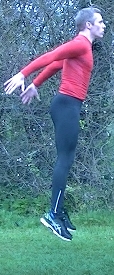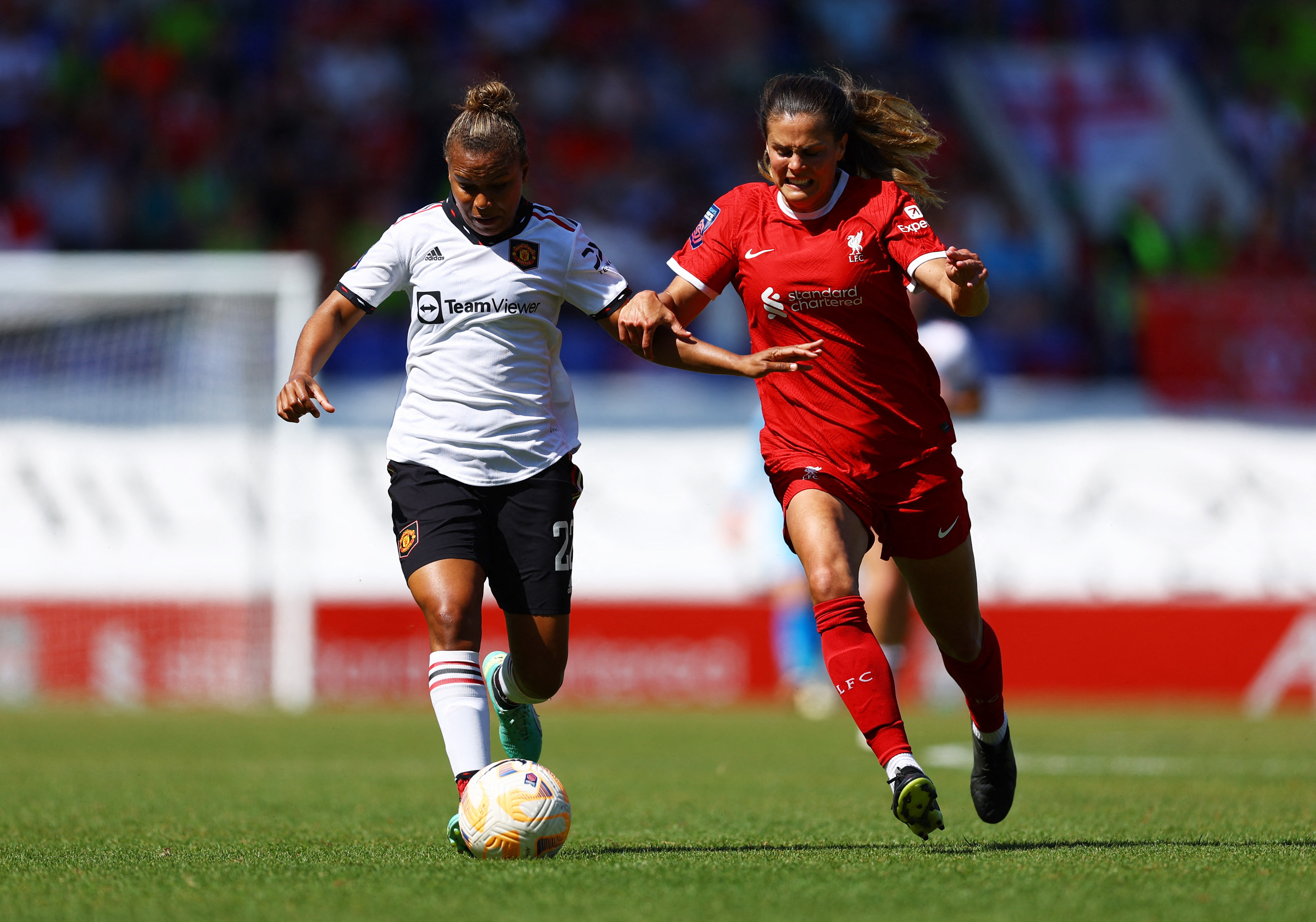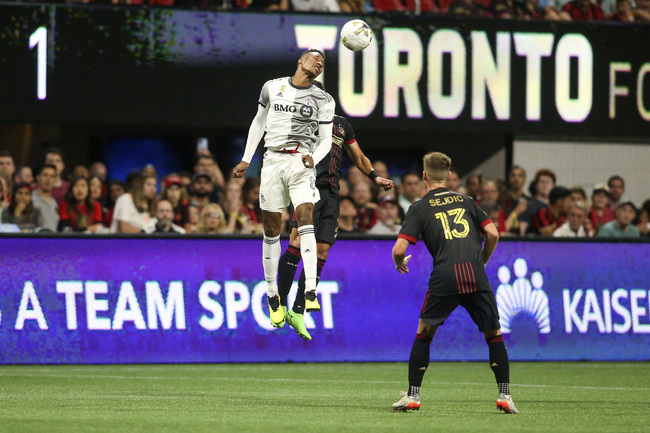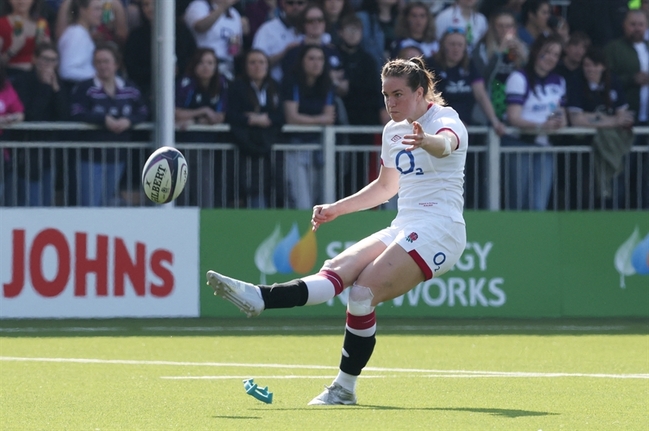2 programs to jump-start your telehealth Ther-ex Rx

This article is the first of a three-part series on guiding athletes and physiotherapists through this turbulent time. This article provides two standard exercise programs challenging the major components of human movement that an athlete can work on within their home, utilizing the most basic equipment.
Background
An athlete’s sporting career largely defines them as a person, and absence from sport impacts their physical condition, mental wellbeing, and even financial circumstances. Some athletes, such as road cyclists and runners, may still follow a strict training protocol using tools like an indoor turbo trainer or a treadmill. But certain athletes, such as swimmers, are greatly hindered based on the restrictions to facilities since pools and gyms aren’t currently accessible. Despite these challenges, exercise remains an effective modality for maintaining health, preventing injury, and helping people manage symptoms of poor mental health. Therefore an exercise program has never been more in need (1). Clinicians and athletes both bear the responsibility of adapting to the current circumstances and to ensuring all stay as fit and conditioned as possible.All sports require an element of strength, power, agility, stability, mental toughness, and skill. To optimize an athlete’s health and to prevent injury, it is essential to facilitate muscle power, strength, and endurance through an appropriate conditioning program (2). In addition, a training plan must maintain the activation of specific stability muscles to ensure that athletes who play multidirectional sports can effectively change direction at speed and reduce the risk of injury. One exercise program cannot meet the physical demands of every sport. Yet, a standard training schedule that is achievable within the constraints of a home environment, fun, and challenging is important. Regular participation in these activities provides some element of exhilaration and endorphin release to athletes used to daily doses of exertion.
A conditioning regimen needs a variety of exercises to challenge strength, power, agility, speed, and mental toughness. These exercises must adapt to the needs of the individual, factoring in previous injuries or areas of weakness and instability. An exercise prescription should be flexible enough to progress to build fitness and regress to modify load.
Knowing most physios have moved to online consultation and treatment, we’ve provided the following programs for you as a starting point for your therapeutic exercises. The two sessions function as complements to each other, providing both strength and circuit sessions. The activities here are for sports-persons who are well-conditioned and familiar with an exercise routine. For best results, alternate sessions to maintain variety and maximize training benefits.
The exercises presented here utilize equipment that athletes likely have on hand. The program outlined below needs only two buckets, four toilet rolls, and a small space of four meters squared. Fill the buckets with thick textbooks, small rocks, sand, mud, or even water to simulate barbells. Adjust the weight according to the exercise. Water as a weight source enables athletes to calculate and track the exact weight as one liter of water weighs one kilogram. Also, the need for control through the exercise to prevent spillage engages core muscles and promotes more neuromuscular control during the activity. Furthermore, using water provides equal weight in both buckets – no matter their size – in the deadlift and the bent-over row exercises that need symmetry.
Strength based program
For the strength-based exercises, aim for a repetition range of 10-15 reps based on the weights used or a duration of 45-60 seconds of exercise per set. Build to three to five sets of each exercise. Doing so makes this program easily achievable within 45 minutes. Exercise instructions given with adaptations to challenge athletes or make the exercise easier.A) Press ups with superman - perform with the shoulders in line with the hands. Engage the core muscles to provide stability to the trunk and lumbar spine.
- Progression – Increase speed with transference between alternate arms and legs.
- Regression - Increase stability by placing both feet on the floor and working just one arm in front.


B) Seated trunk rotation - perform with a neutral spine and feet uncrossed.
- Progression – increase the weight and range of the exercise.
- Regression – Place feet on the floor with knees flexed and to reduce the weight.


C) Plank reach across - In the plank position, alternate hands and feet reaching across the body to target.
- Progression – Place toilet roll further away and increase speed. Employ a partner to call out target challenging speed and reaction time.
- Regression – Place toilet rolls close to the midline of the body.


D) Front Squats - Hold weight close to body and ensure back is aligned in neutral and the heels are flat on the floor throughout.
- Progression – Increase weight in the bucket.
- Regression – Reduce weight in bucket but maintain the depth.


E) Reverse lunge with shoulder press - perform reps on the same side instead of alternating legs as this increases load on the involved side. Drive through the front leg by placing the heel into the floor.
- Progression – Increase the weight in the bucket.
- Regression – Reduce the weight in the bucket and do the shoulder press as a separate exercise.



F) Shoulder walk overs - In the plank position, keep shoulders over hands throughout to maintain stability throughout the trunk. Aim to achieve full shoulder elevation with an outstretched arm that hurtles the toilet rolls.
- Progression – Increase speed and work through a larger range, adding a push up after both arms walk over the roll.
- Regression – Take one toilet roll away.


G) Bent over row - perform with a neutral spine.
- Progression – Increase the weight of the exercise.
- Regression – reduce the weight of the exercise.


H) Single leg pike walk up - perform with both palms firmly on the floor throughout. Keep the non working leg high in the air as to keep a straight line with the body. Walk hands back toward the bucket to a pike position, then return to starting plank.
- Progression – try to increase the range and speed.
- Regression – Remove the bucket so the feet are on the floor.


I) Deadlift - perform with a neutral spine throughout so as to bend from the hips and not the lumbar spine.
- Progression – increase the weight or even stand on a step to increase the range.
- Regression – Reduce the weight.


J) One-legged Romanian deadlift - perform holding the weight in the hand opposite to the standing leg. Keep a straight line from head to foot.
- Progression – Increase the weight.
- Regression – Reduce the range or the weight.



Speed and agility program
In the speed, agility, and power-based circuit session, each activity should last 30-60 seconds over eight exercises. This means sets of four to eight minutes of work to complete the whole circuit. Aim for 45 minutes total work in this session. Exercises in both sets (Box 1C and Box 2 G) can employ a partner whereby they call the direction to aim for (as in the game twister), and to challenge reaction speed and stability.A) Side jumping over row of 4 - 6 toilet rolls



B) Side running over toilet rolls with single leg - land on outside leg at the end


C) Squat Jumps


D) Speedskating with forwards propulsion


E) Plyometric lunges with alternate legs



F) Walking or running mountain climber

G) Plank walk ups - start on elbows and move in a clockwise direction to extended arms, keeping hips stable. Avoid rocking hips and trunk from side to side. Try switching directions after 30 seconds


H) North, south, east and west - start in sports position, have a partner call directions, and shuffle and lunge to touch target


Conclusion
There are many resources online for exercise programing, but athletes need prescriptions specific to their sport. Many undergoing rehab or trying to stay in condition need more than HIIT workouts and body weight activities. The ideas laid out in this plan are a starting point and may stimulate other ideas of equipment to use within the home setting. Athletes need professional guidance in order to stay active and ready for the time when they can safely return to sport.
References
- Systematic Review, 2017, 6, 177.
- Journals British Soc for Rheu, 2001, 40, 859 – 862.
You need to be logged in to continue reading.
Please register for limited access or take a 30-day risk-free trial of Sports Injury Bulletin to experience the full benefits of a subscription. TAKE A RISK-FREE TRIAL
TAKE A RISK-FREE TRIAL
Newsletter Sign Up
Subscriber Testimonials
Dr. Alexandra Fandetti-Robin, Back & Body Chiropractic
Elspeth Cowell MSCh DpodM SRCh HCPC reg
William Hunter, Nuffield Health
Newsletter Sign Up
Coaches Testimonials
Dr. Alexandra Fandetti-Robin, Back & Body Chiropractic
Elspeth Cowell MSCh DpodM SRCh HCPC reg
William Hunter, Nuffield Health
Be at the leading edge of sports injury management
Our international team of qualified experts (see above) spend hours poring over scores of technical journals and medical papers that even the most interested professionals don't have time to read.
For 17 years, we've helped hard-working physiotherapists and sports professionals like you, overwhelmed by the vast amount of new research, bring science to their treatment. Sports Injury Bulletin is the ideal resource for practitioners too busy to cull through all the monthly journals to find meaningful and applicable studies.
*includes 3 coaching manuals
Get Inspired
All the latest techniques and approaches
Sports Injury Bulletin brings together a worldwide panel of experts – including physiotherapists, doctors, researchers and sports scientists. Together we deliver everything you need to help your clients avoid – or recover as quickly as possible from – injuries.
We strip away the scientific jargon and deliver you easy-to-follow training exercises, nutrition tips, psychological strategies and recovery programmes and exercises in plain English.









